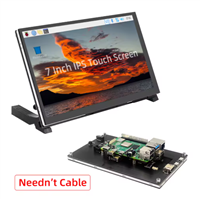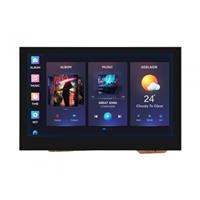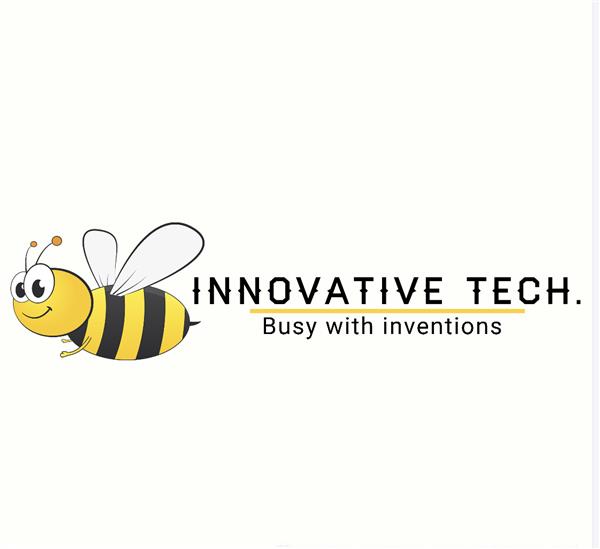|
|
100nF 16V ceramic capacitor |
x 3 | |
|
|
10uF 16V tantalum capacitor |
x 2 | |
|
|
1uF 16V ceramic capacitor |
x 2 | |
|
|
15pF 16V ceramic capacitor |
x 2 | |
|
|
22 Ohm resistor |
x 2 | |
|
|
10 kOhm resistor |
x 2 | |
|
|
1.5 kOhm resistor |
x 2 | |
|
|
SMD 0603 LED |
x 3 | |

|
ATMEGA32U4-AUMicrochip Technology
|
x 1 | |
|
|
16MHz crystal |
x 1 | |
|
|
Polyfuse |
x 1 | |
|
|
SMD Push button |
x 1 | |
|
|
Ferrite bead 100 Ohm |
x 1 | |
|
|
Micro USB connector |
x 1 |

|
KiCADKicad
|
A custom ATmega32u4 board
I decided to make my own ATmega32u4-based microcontroller board for several reasons. I wanted to have a general design based on this microcontroller which I can adapt in other PCB designs that need a microcontroller. I also wanted to practice SMD soldering, PCB design in general, and I needed some new microcontrollers so this was kind of a win-win situation.
I added an interactive BOM so you can pick the parts more easily.
Parts Value and footprint
C5, C7, C10 - 100nF C_0603_1608Metric
C2, C6 - 10uF CP_EIA-3528-12_Kemet-T
C4, C11 - 1uF C_0603_1608Metric
C8, C9 - 15pF* C_0603_1608Metric
R2, R3 - 22R R_0402_1005Metric
R4, R7 - 10k R_0603_1608Metric
R5, R6 - 330R R_0603_1608Metric
R1 - 1k5 R_0603_1608Metric
D1, D2, D3 - LED LED_0603_1608Metric
U1 - ATmega32U4-AU TQFP-44_10x10mm_P0.8mm
Y1 - Crystal Crystal_SMD_5032-2Pin_5.0x3.2mm
F1 - Polyfuse Fuse_1812_4532Metric
SW1 - SW_Push SW_SPST_PTS645
FB1 - 100R L_0805_2012Metric
J0 - USB_B_Micro USB_Micro-B_Amphenol_10103594-0001LF_Horizontal
Notice:
- C8 and C9 depend on the load capacitance of the crystal! You might have to use different value than mine.
- The open side of the LEDs' courtyard is the positive (VCC/anode) side. See: interactive BOM
A custom ATmega32u4 board
*PCBWay community is a sharing platform. We are not responsible for any design issues and parameter issues (board thickness, surface finish, etc.) you choose.

Raspberry Pi 5 7 Inch Touch Screen IPS 1024x600 HD LCD HDMI-compatible Display for RPI 4B 3B+ OPI 5 AIDA64 PC Secondary Screen(Without Speaker)
BUY NOW
ESP32-S3 4.3inch Capacitive Touch Display Development Board, 800×480, 5-point Touch, 32-bit LX7 Dual-core Processor
BUY NOW
Raspberry Pi 5 7 Inch Touch Screen IPS 1024x600 HD LCD HDMI-compatible Display for RPI 4B 3B+ OPI 5 AIDA64 PC Secondary Screen(Without Speaker)
BUY NOW- Comments(10)
- Likes(14)
-
 Engineer
Mar 20,2025
Engineer
Mar 20,2025
-
 Anthony Pedotto
Feb 22,2025
Anthony Pedotto
Feb 22,2025
-
 Engineer
Sep 20,2024
Engineer
Sep 20,2024
-
 fanfan
Jun 20,2024
fanfan
Jun 20,2024
-
 Engineer
May 24,2024
Engineer
May 24,2024
-
 Rob Mercado
Apr 18,2024
Rob Mercado
Apr 18,2024
-
 Willem Braat
Feb 29,2024
Willem Braat
Feb 29,2024
-
 Silk
Feb 06,2024
Silk
Feb 06,2024
-
 Engineer
Dec 27,2023
Engineer
Dec 27,2023
-
 Engineer
Oct 03,2023
Engineer
Oct 03,2023
-
 Engineer
Sep 13,2023
Engineer
Sep 13,2023
-
 Engineer
Feb 07,2023
Engineer
Feb 07,2023
-
 joseph chrzempiec
Nov 11,2022
joseph chrzempiec
Nov 11,2022
-
 Silvano Rossi
Mar 21,2022
Silvano Rossi
Mar 21,2022
- 0 USER VOTES
- YOUR VOTE 0.00 0.00
- 1
- 2
- 3
- 4
- 5
- 6
- 7
- 8
- 9
- 10
- 1
- 2
- 3
- 4
- 5
- 6
- 7
- 8
- 9
- 10
- 1
- 2
- 3
- 4
- 5
- 6
- 7
- 8
- 9
- 10
- 1
- 2
- 3
- 4
- 5
- 6
- 7
- 8
- 9
- 10
 More by Curious Scientist
More by Curious Scientist
-
 High-performance 3-axis stepper motor control panel
In this project, I show you my new development which is a high-performance 3-axis stepper motor cont...
High-performance 3-axis stepper motor control panel
In this project, I show you my new development which is a high-performance 3-axis stepper motor cont...
-
 STM32F070F6P6 miniature USB microcontroller board
A small but powerful Arduino-compatible STM32 board.I designed this board because I was curious if i...
STM32F070F6P6 miniature USB microcontroller board
A small but powerful Arduino-compatible STM32 board.I designed this board because I was curious if i...
-
 Stepper motor developing platform
IntroductionIn this project, I show you my newest device which is a stepper motor developing platfor...
Stepper motor developing platform
IntroductionIn this project, I show you my newest device which is a stepper motor developing platfor...
-
 Custom-made self-contained DC power meter
This project realizes a tiny "self-sufficient" power meter that can be inserted into any DC power li...
Custom-made self-contained DC power meter
This project realizes a tiny "self-sufficient" power meter that can be inserted into any DC power li...
-
 10-channel NTC thermistor-based temperature logger
This project is designed to be a 10-channel temperature logger based on 10k NTC thermistors.I design...
10-channel NTC thermistor-based temperature logger
This project is designed to be a 10-channel temperature logger based on 10k NTC thermistors.I design...
-
 Educational board for strain gauges, Wheatstone bridges and op-amps
I show you a little device that I built so I can explain more things related to strain gauges, Wheat...
Educational board for strain gauges, Wheatstone bridges and op-amps
I show you a little device that I built so I can explain more things related to strain gauges, Wheat...
-
 USB PD Breadboard Power Supply
In this article, I show you my new creation. It is a USB PD decoy-based breadboard power supply. All...
USB PD Breadboard Power Supply
In this article, I show you my new creation. It is a USB PD decoy-based breadboard power supply. All...
-
 ADS1256 - RP2040 Custom DAQ Front Panel with GPIO
This is just a simple PCB panel that belongs to my other project which is a high-performance DAQ.A r...
ADS1256 - RP2040 Custom DAQ Front Panel with GPIO
This is just a simple PCB panel that belongs to my other project which is a high-performance DAQ.A r...
-
 ADS1256 - RP2040 Custom DAQ Front Panel without GPIO
This is just a simple PCB panel that belongs to my other project which is a high-performance DAQ.A r...
ADS1256 - RP2040 Custom DAQ Front Panel without GPIO
This is just a simple PCB panel that belongs to my other project which is a high-performance DAQ.A r...
-
 10th Anniversary Badge
I designed this small badge for PCBWay's 10th anniversary.I tried to make a deeper meaning to the bo...
10th Anniversary Badge
I designed this small badge for PCBWay's 10th anniversary.I tried to make a deeper meaning to the bo...
-
 ADS1256 - Atmega32u4 Custom DAQ board
IntroductionIn this project, I show you two things. One is a new version (v1.2) of my custom DAQ bas...
ADS1256 - Atmega32u4 Custom DAQ board
IntroductionIn this project, I show you two things. One is a new version (v1.2) of my custom DAQ bas...
-
 Debounced rotary encoder module
In this project, I show you my approach to making a rotary encoder module.One can buy different rota...
Debounced rotary encoder module
In this project, I show you my approach to making a rotary encoder module.One can buy different rota...
-
 Custom ADS1256 board with ATmega32U4
I created my own ADS1256 PCB after working with this AD converter for several years. I wanted to bui...
Custom ADS1256 board with ATmega32U4
I created my own ADS1256 PCB after working with this AD converter for several years. I wanted to bui...
-
 TCD1304 - STM32F401CCU6 breakout board
The recent modifications made to the circuit board design have improved its functionality and space ...
TCD1304 - STM32F401CCU6 breakout board
The recent modifications made to the circuit board design have improved its functionality and space ...
-
 TCD1304 miniature PCB rev2
The redesign of the PCB involved several key changes to improve its performance and decrease its siz...
TCD1304 miniature PCB rev2
The redesign of the PCB involved several key changes to improve its performance and decrease its siz...
-
 2-channel breadboard voltmeter
The project originally stems from my CH32 tutorial series. I started working with this chip not so l...
2-channel breadboard voltmeter
The project originally stems from my CH32 tutorial series. I started working with this chip not so l...
-
 ADS1256 - RP2040 Custom DAQ Rear Panel
This is just a simple PCB panel that belongs to my other project which is a high-performance DAQ.A r...
ADS1256 - RP2040 Custom DAQ Rear Panel
This is just a simple PCB panel that belongs to my other project which is a high-performance DAQ.A r...
-
 ADS1256 - RP2040 Custom DAQ with GPIOs
This is my (hopefully) last iteration of the ADS1256-based DAQ board. I replaced the ATmega32U4 micr...
ADS1256 - RP2040 Custom DAQ with GPIOs
This is my (hopefully) last iteration of the ADS1256-based DAQ board. I replaced the ATmega32U4 micr...
-
 High-performance 3-axis stepper motor control panel
In this project, I show you my new development which is a high-performance 3-axis stepper motor cont...
High-performance 3-axis stepper motor control panel
In this project, I show you my new development which is a high-performance 3-axis stepper motor cont...
-
 STM32F070F6P6 miniature USB microcontroller board
A small but powerful Arduino-compatible STM32 board.I designed this board because I was curious if i...
STM32F070F6P6 miniature USB microcontroller board
A small but powerful Arduino-compatible STM32 board.I designed this board because I was curious if i...
-
 Stepper motor developing platform
IntroductionIn this project, I show you my newest device which is a stepper motor developing platfor...
Stepper motor developing platform
IntroductionIn this project, I show you my newest device which is a stepper motor developing platfor...
-
 Custom-made self-contained DC power meter
This project realizes a tiny "self-sufficient" power meter that can be inserted into any DC power li...
Custom-made self-contained DC power meter
This project realizes a tiny "self-sufficient" power meter that can be inserted into any DC power li...
-
 10-channel NTC thermistor-based temperature logger
This project is designed to be a 10-channel temperature logger based on 10k NTC thermistors.I design...
10-channel NTC thermistor-based temperature logger
This project is designed to be a 10-channel temperature logger based on 10k NTC thermistors.I design...
-
 Educational board for strain gauges, Wheatstone bridges and op-amps
I show you a little device that I built so I can explain more things related to strain gauges, Wheat...
Educational board for strain gauges, Wheatstone bridges and op-amps
I show you a little device that I built so I can explain more things related to strain gauges, Wheat...
-
 USB PD Breadboard Power Supply
In this article, I show you my new creation. It is a USB PD decoy-based breadboard power supply. All...
USB PD Breadboard Power Supply
In this article, I show you my new creation. It is a USB PD decoy-based breadboard power supply. All...
-
 ADS1256 - RP2040 Custom DAQ Front Panel with GPIO
This is just a simple PCB panel that belongs to my other project which is a high-performance DAQ.A r...
ADS1256 - RP2040 Custom DAQ Front Panel with GPIO
This is just a simple PCB panel that belongs to my other project which is a high-performance DAQ.A r...
-
 ADS1256 - RP2040 Custom DAQ Front Panel without GPIO
This is just a simple PCB panel that belongs to my other project which is a high-performance DAQ.A r...
ADS1256 - RP2040 Custom DAQ Front Panel without GPIO
This is just a simple PCB panel that belongs to my other project which is a high-performance DAQ.A r...
-
 10th Anniversary Badge
I designed this small badge for PCBWay's 10th anniversary.I tried to make a deeper meaning to the bo...
10th Anniversary Badge
I designed this small badge for PCBWay's 10th anniversary.I tried to make a deeper meaning to the bo...
-
 ADS1256 - Atmega32u4 Custom DAQ board
IntroductionIn this project, I show you two things. One is a new version (v1.2) of my custom DAQ bas...
ADS1256 - Atmega32u4 Custom DAQ board
IntroductionIn this project, I show you two things. One is a new version (v1.2) of my custom DAQ bas...
-
 Debounced rotary encoder module
In this project, I show you my approach to making a rotary encoder module.One can buy different rota...
Debounced rotary encoder module
In this project, I show you my approach to making a rotary encoder module.One can buy different rota...
-
-
-
Modifying a Hotplate to a Reflow Solder Station
848 1 5 -
MPL3115A2 Barometric Pressure, Altitude, and Temperature Sensor
444 0 1 -
-
Nintendo 64DD Replacement Shell
375 0 2 -
V2 Commodore AMIGA USB-C Power Sink Delivery High Efficiency Supply Triple Output 5V ±12V OLED display ATARI compatible shark 100W
1086 4 2 -
How to measure weight with Load Cell and HX711
688 0 3
















































Hi! Sorry, but the files are not available publicly.
Why not? Are you selling the schematics somewhere?
No. I just simply decided to not publish them.
But just now I see that you offer this your project fully assembled by PCBWay. This is a very good solution and the cost is contained into regular terms.
Hi and thank you for your kind remarks! I had to use SMD components because I wanted to keep the size of the board to the minimum and it also looks better. Furthermore, the format of the chip is also kind of asking for SMD parts. Actually, it is not too difficult to hand-solder SMD components if you have a magnifier or a microscope, plus a soldering iron with a sharp tip. With proper settings, enough flux, the solder finds its way to the legs and solder tabs, so you will be able to avoid short circuits and will be able to solder the pins nicely.
I mentioned the difficulties of soldering SMD components not because it is a defect, but because I believe that most of us can be able to solder components with 2 terminals or so. If you look at the numerous videos on YouTube, you will find that many do not even know how to hold the soldering iron in their hand, and the results are often creepy too. I'm referring to the average hobbyist. Personally, however, I manage quite well and have no details. I think it's due to the 2 years on the assembly line and the next 40 years during which the welder never abandoned me. Even for components like ICs, I don't use small tips, but I prefer to create a so called tin 'wave' that looks like it knows exactly what I intend to make it do! My observation is therefore not a criticism, but my expressing that these (surmountable) difficulties could be a reason that keeps many visitors just 'looking' at your beautiful project. I also use SMD for many of my projects (not published). Congratulations again.
Thank you for the explanation! Yes, I agree that having SMD components would probably discourage people with little soldering experience from using my designs. Actually, I made one of my latest designs (DRO reader with ATtiny85) with only through-hole components, and one of the first comments under my video was about why I haven't used SMD components. And actually I gave the same explanation as you wrote here: I wanted to make that design to be easily doable for everyone. So, it is sometimes hard to decide which way to go. I could probably make 2 versions, but at this moment, I am happy that I can afford the parts for one type of board. Cheers!
I think that the choice must depend on the number of pieces that are expected to be made. In the case of projects intended for a small number of realizations, it can be assumed that whoever will assemble the components will be able, even with a certain effort, to assemble the SMDs. On the other hand, in the case of projects for which a greater number of realizations is expected, it is reasonable to assume that the welding of the components is an obstacle that must necessarily be overcome. However, there will always remain a certain indecision between the choice of making the assembly simple or making the assembly compact. In the case of your elegant project, the idea of making it with pass-through components does not cross my mind. But let's say that in general, having provided the scheme, you have put anyone in a position to replicate your project in different forms. But all these words must not distract attention from the very good result of your work. Regards